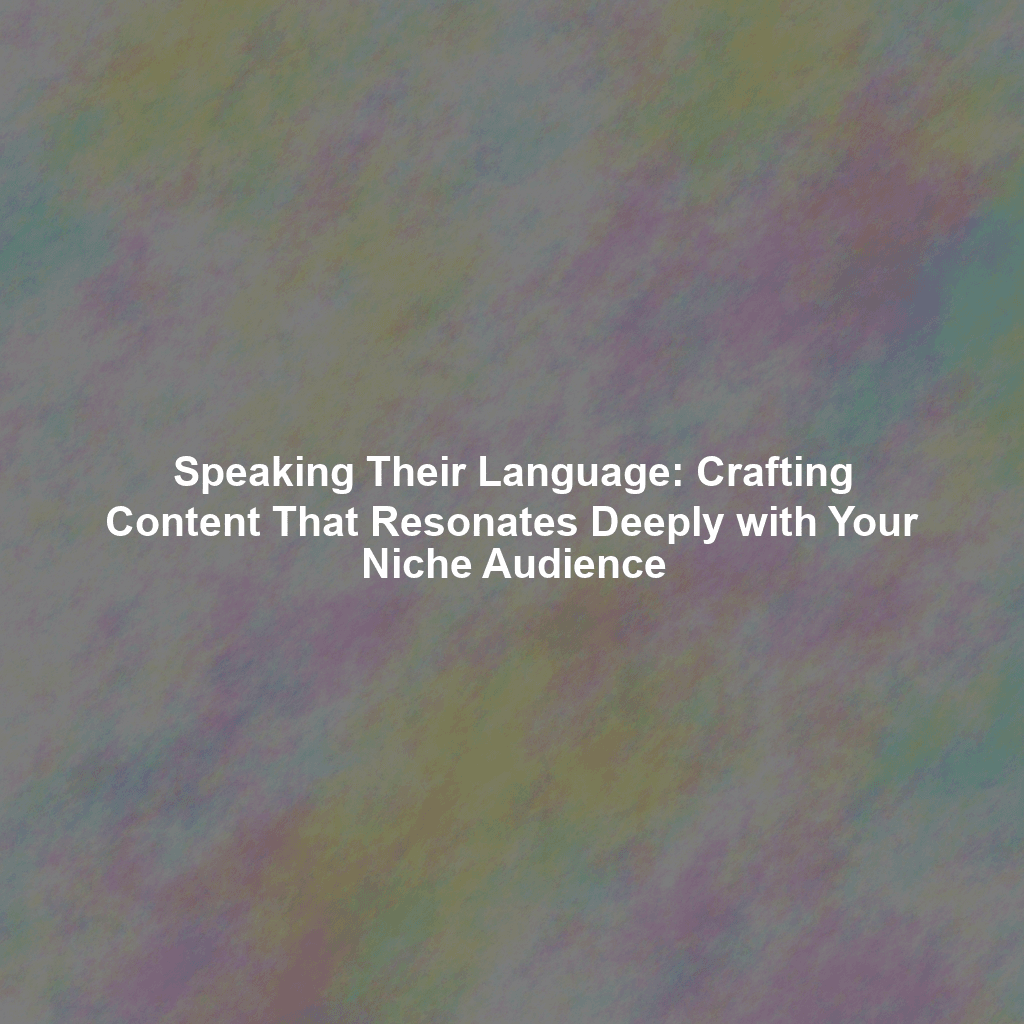In today’s saturated digital landscape, generic content simply gets lost in the noise. To truly connect with your target audience and build a loyal following, you need to speak their language. This means creating niche content that resonates deeply with their specific needs, interests, and challenges. This article dives into the nuances of niche content creation, focusing on understanding your audience’s pain points, employing relevant terminology, and tailoring your content formats to their preferred consumption methods.
Understanding Your Niche Audience: The Foundation of Effective Content
Before you even begin brainstorming content ideas, you need a crystal-clear understanding of your niche audience. Who are they? What are their demographics, interests, and online habits? What are their biggest challenges and frustrations? Where do they hang out online?
Researching Your Audience: Uncovering Their Needs
Here are a few effective methods for researching your niche audience:
- Surveys and Questionnaires: Directly ask your audience about their needs, preferences, and pain points. Tools like SurveyMonkey and Google Forms can be invaluable here.
- Social Media Listening: Monitor relevant hashtags, groups, and forums to understand the conversations your audience is having. Tools like Mention and Brandwatch can help automate this process.
- Competitor Analysis: Analyze the content and strategies of your competitors. What’s working for them? What’s not? What can you do differently?
- Keyword Research: Use tools like Google Keyword Planner, Ahrefs, or SEMrush to identify the keywords and phrases your audience is searching for. This helps you understand their priorities and the language they use.
- Analyze Existing Data: If you already have a website or social media presence, analyze your analytics data to understand who your audience is and what content they engage with the most.
Speaking Their Language: Using Relevant Terminology
Once you understand your audience’s needs, it’s crucial to speak their language. This means using the terminology, jargon, and slang that they use in their everyday conversations. Avoid using overly technical or complex language that might alienate them.
Why Terminology Matters
Using the right terminology accomplishes several things:
- Establishes Credibility: It shows that you understand their world and are an expert in their field.
- Builds Trust: It creates a sense of connection and rapport.
- Improves Comprehension: It makes your content easier to understand and more engaging.
- Boosts SEO: Using relevant keywords helps your content rank higher in search results.
Finding the Right Terminology
Where can you find the right terminology?
- Forums and Online Communities: Pay attention to the language used in relevant forums, groups, and online communities.
- Industry Publications: Read industry blogs, magazines, and journals to stay up-to-date on the latest terminology.
- Social Media: Monitor social media conversations to see how your audience talks about your topic.
Tailoring Content Formats to Preferred Consumption Methods
Different audiences prefer to consume content in different formats. Some prefer reading blog posts, while others prefer listening to podcasts or watching videos. It’s crucial to tailor your content formats to the preferences of your niche audience.
Common Content Formats and Their Strengths
- Blog Posts: Ideal for providing in-depth information and answering specific questions.
- Videos: Great for demonstrating concepts, showcasing products, and building a personal connection.
- Podcasts: Perfect for on-the-go learning and building a loyal following.
- Webinars: Excellent for delivering interactive training and Q&A sessions.
- Infographics: Effective for visualizing data and presenting complex information in an easy-to-understand format.
- Long-Form Guides (eBooks): Provide comprehensive coverage of a topic and establish you as an authority in your niche.
Choosing the Right Format
Consider the following factors when choosing a content format:
- Your Audience’s Preferences: Which formats do they prefer to consume?
- The Type of Content: Is it best suited for a written, audio, or video format?
- Your Resources: Do you have the time, budget, and expertise to create high-quality content in the chosen format?
Measuring and Optimizing Your Niche Content
Creating effective niche content is an ongoing process. You need to track your results and optimize your content based on what’s working and what’s not.
Key Metrics to Track
- Website Traffic: How much traffic is your content generating?
- Engagement: How are people interacting with your content (e.g., comments, shares, likes)?
- Conversion Rates: How many people are taking the desired action (e.g., signing up for your email list, purchasing a product)?
- Search Engine Rankings: How well is your content ranking in search results?
Tools for Measuring Your Results
- Google Analytics: Track website traffic and user behavior.
- Social Media Analytics: Track engagement and reach on social media platforms.
- Marketing Automation Platforms: Track conversion rates and lead generation.
Conclusion
Creating niche content that resonates with your target audience is essential for building a loyal following, establishing authority, and driving business results. By understanding your audience’s needs, speaking their language, tailoring your content formats, and continuously optimizing your efforts, you can create content that truly connects with your niche and achieves your marketing goals. Stop speaking at your audience, and start speaking with them.
 Skip to content
Skip to content

